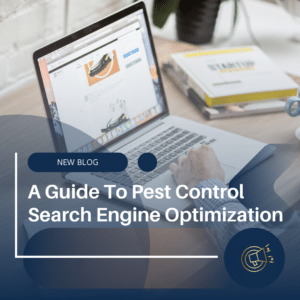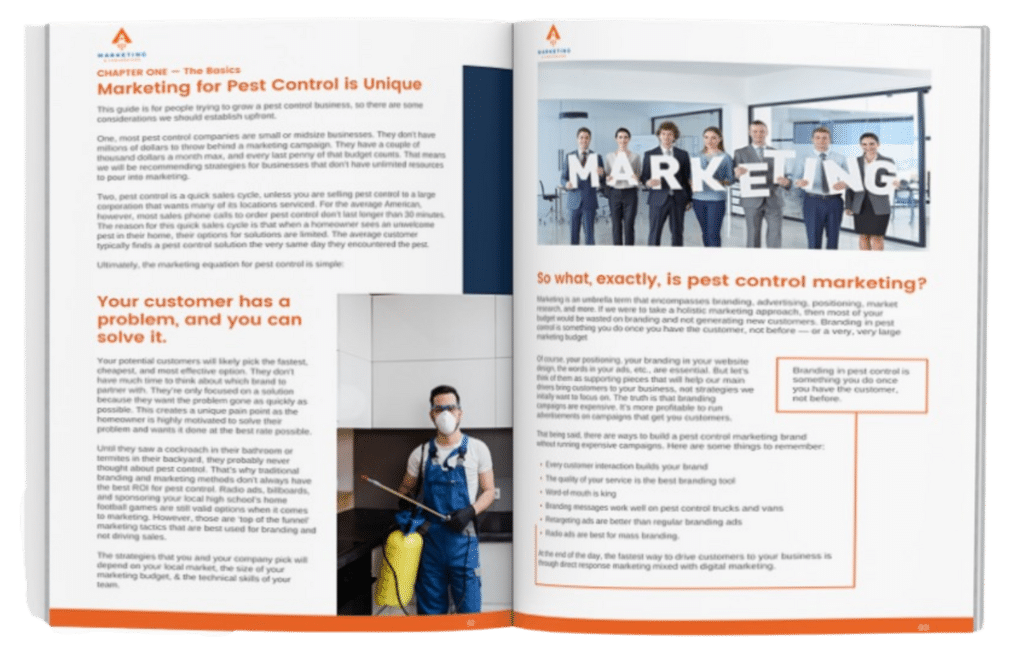
How to pick a marketing agency
How to pick a marketing agency Here’s a truth that can be hard to swallow: Even the best product or service in the world won’t
Pest control businesses need to utilize SEO strategies if they want to remain competitive in the market. This blog post will answer the top 10 questions about pest control SEO and provide valuable tips for pest control business owners on how to optimize their websites for better search engine rankings successfully.
Search Engine Optimization (SEO) is the process of optimizing web content so that it appears higher in search engine results. SEO involves various tactics, such as researching keywords, creating high-quality content, link building, and technical optimization. Each tactic has its own purpose and can help improve a website’s visibility in search engine rankings.
To improve SEO for your pest control business, the first step is to identify relevant keywords and phrases that potential customers might use when searching for services related to pest control. Then, create content that incorporates those keywords naturally throughout the text, without overstuffing them. Additionally, use internal links to other pages on your site and external links to relevant websites to make your content even more helpful for readers. Finally, optimize page titles and descriptions with relevant keywords that accurately reflect the content on each page.

When it comes to SEO ranking factors, several important ones should be taken into account. These include keyword usage and relevance, quality backlinks from authoritative sources, website mobile-friendliness, page loading speed, user experience (UX), website security (SSL certificate), meta tags, structured data markup, and social signals. All these factors can help improve a website’s ranking in search engine results pages (SERPs).
Local SEO refers to optimizing a website specifically for local searches. To optimize a pest control business website for local searches, start by creating location-specific pages with accurate information about each service area (e.g., city name). Additionally, add local keywords in page titles and descriptions as well as Google My Business listings for each service area. Finally, build links from local directories and resources for added visibility.
Content types that are most effective for SEO are those that are educational or informative in nature. This includes blog posts, videos, infographics, guides/tutorials/how-tos, FAQs/Q&As, case studies/success stories, reviews/testimonials/interviews, and research studies/reports. When creating content for pest control businesses, make sure to focus on topics related to pest prevention tips or advice on choosing the right pest control company.
To measure your SEO success, you need to track key metrics such as organic traffic growth rate; average time spent on a page; bounce rate; conversion rate; the total number of indexed pages; domain authority; backlinks profile; keyword rankings; SERP features; SERP CTR; etc. You can track these metrics using different analytical tools such as Google Analytics or Search Console or third-party tools like Ahrefs or Moz Pro.
The best tools for tracking your SEO performance are Google Analytics, Search Console, and third-party tools like Ahrefs or Moz Pro. These tools allow you to monitor key metrics such as organic traffic growth rate; average time spent on the page; bounce rate; conversion rate; the total number of indexed pages; domain authority; backlinks profile; keyword rankings; SERP features; SERP CTR etc., which will help you identify what is working well and what needs improvement in your SEO strategy.
It’s important to update your content regularly for SEO because search engines prefer fresh content over outdated content. However, there isn’t a definitive answer about how often you should update your content since it depends on the type of content you have created and the industry you’re in. Generally speaking, though, it’s recommended that you update your content at least once every few months to remain fresh and up-to-date with the latest trends in the industry.
Organic traffic refers to visitors who arrive at your website from unpaid sources such as search engine result pages (SERPs). To get more organic traffic to your website, you need to optimize it properly for search engines with relevant keywords and create high-quality content that appeals to readers while also addressing their needs and interests related to pest control services. Additionally, build links from authoritative sources and engage in social media activities such as sharing useful articles or blog posts with followers that can potentially attract more organic visitors to your website over time.
Organic traffic refers to visitors who arrive at your website from unpaid sources such as search engine result pages (SERPs). To get more organic traffic to your website, you need to optimize it properly for search engines with relevant keywords and create high-quality content that appeals to readers while also addressing their needs and interests related to pest control services. Additionally, build links from authoritative sources and engage in social media activities such as sharing useful articles or blog posts with followers that can potentially attract more organic visitors to your website over time.
Backlinks refer to links coming from other websites pointing back at yours, which are essential for improving a website’s ranking in SERPs since they signal the trustworthiness and relevance of a particular web page or domain overall. To build quality backlinks, you need to research popular websites within your niche and reach out directly, asking them if they would be interested in linking back to your site through guest blogging opportunities or interviews with experts within your field. Additionally , use social media platforms such as Twitter or LinkedIn to engage with influencers within your industry who might be willing to link back to your site. Finally, submit press releases related to events taking place within your organization or industry that are newsworthy enough for other sites covering similar topics.

How to pick a marketing agency Here’s a truth that can be hard to swallow: Even the best product or service in the world won’t
To ensure that your marketing dollars are contributing to your pest control company’s growth, You have to ensure profitability. There are a lot of ways to ensure profitability but in this blog post we will tackle just three of them and if you implement them early, you are a lot more likely to fill your routes with ideal customers that love to live pest free.

Growing a pest control business involves online strategies. Partnering with a pest control digital marketing agency can enhance your online visibility further.

Marketing automation is a digital marketing strategy that uses technology to automate repetitive marketing tasks and workflows.

Customer journey is often visualized through a concept known as the digital marketing funnel. This visually represents a potential customer’s stages before purchasing or taking a desired action.

Most of the time, the company won’t have to pay for anything in email marketing. They can easily build their contact lists on their website when their visitors subscribe to them. They can also buy contact lists from other businesses, which can only cost a few bucks for thousands of emails. So if you’re considering doing email marketing for your pest control business, below are 10 tips you can apply to your campaign.

Grab your free copy of our Ultimate Pest Control Marketing Guide and uncover 10+ years of pest control marketing secrets.
Our Promise
We love working with and growing local businesses. If we can’t help, we’ll send you to someone who can.